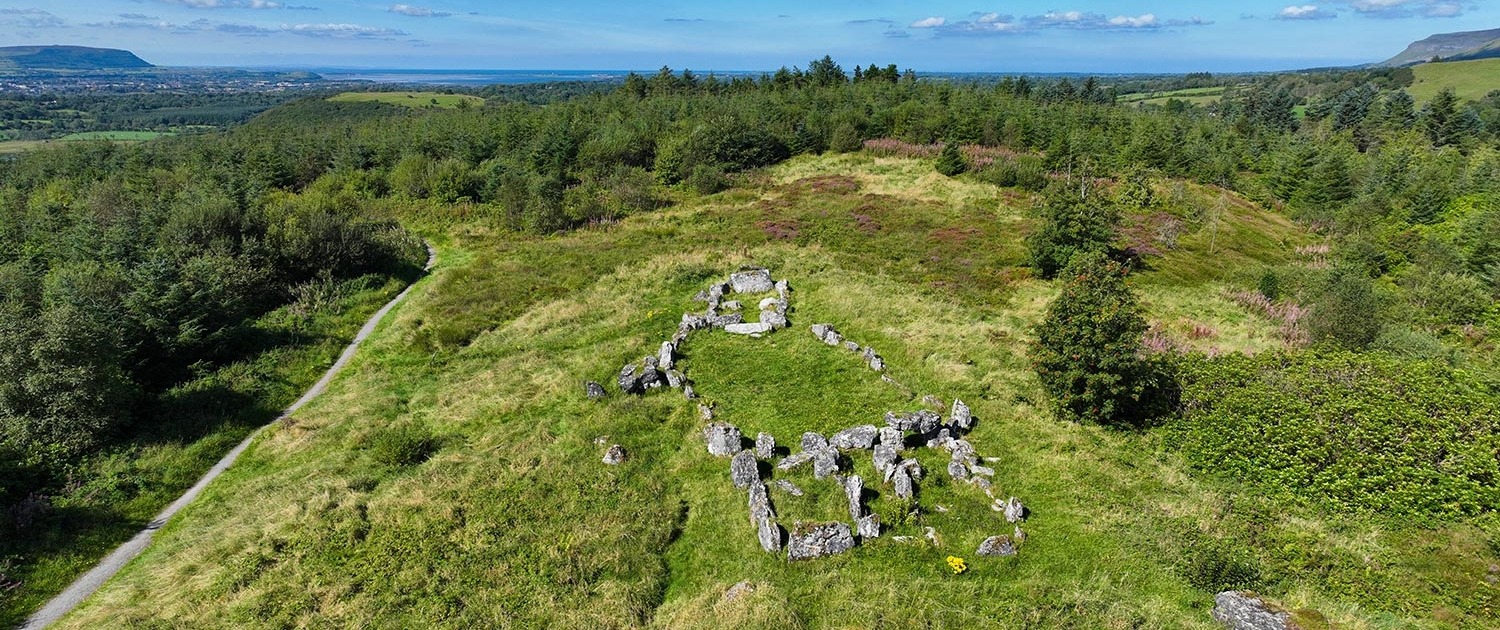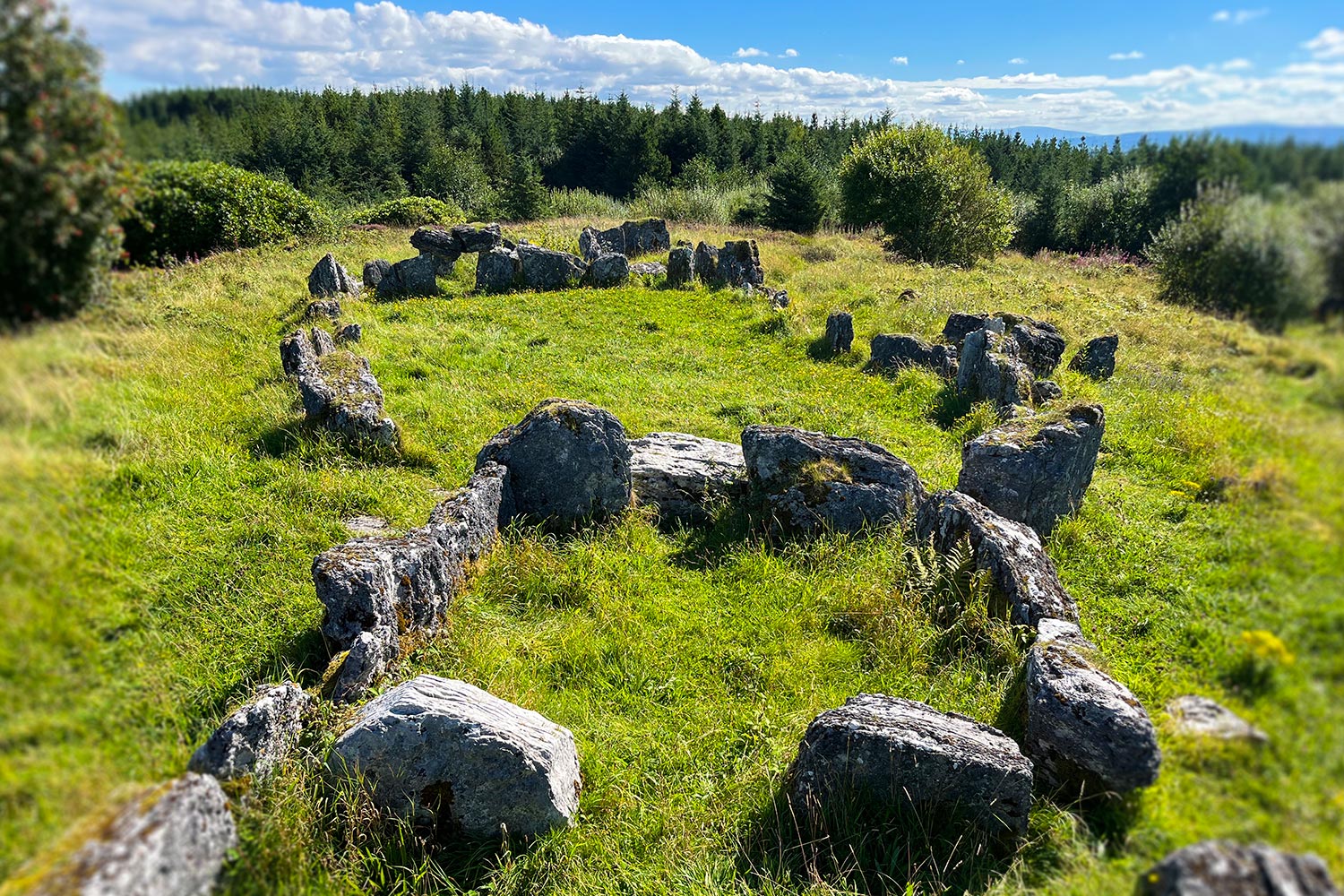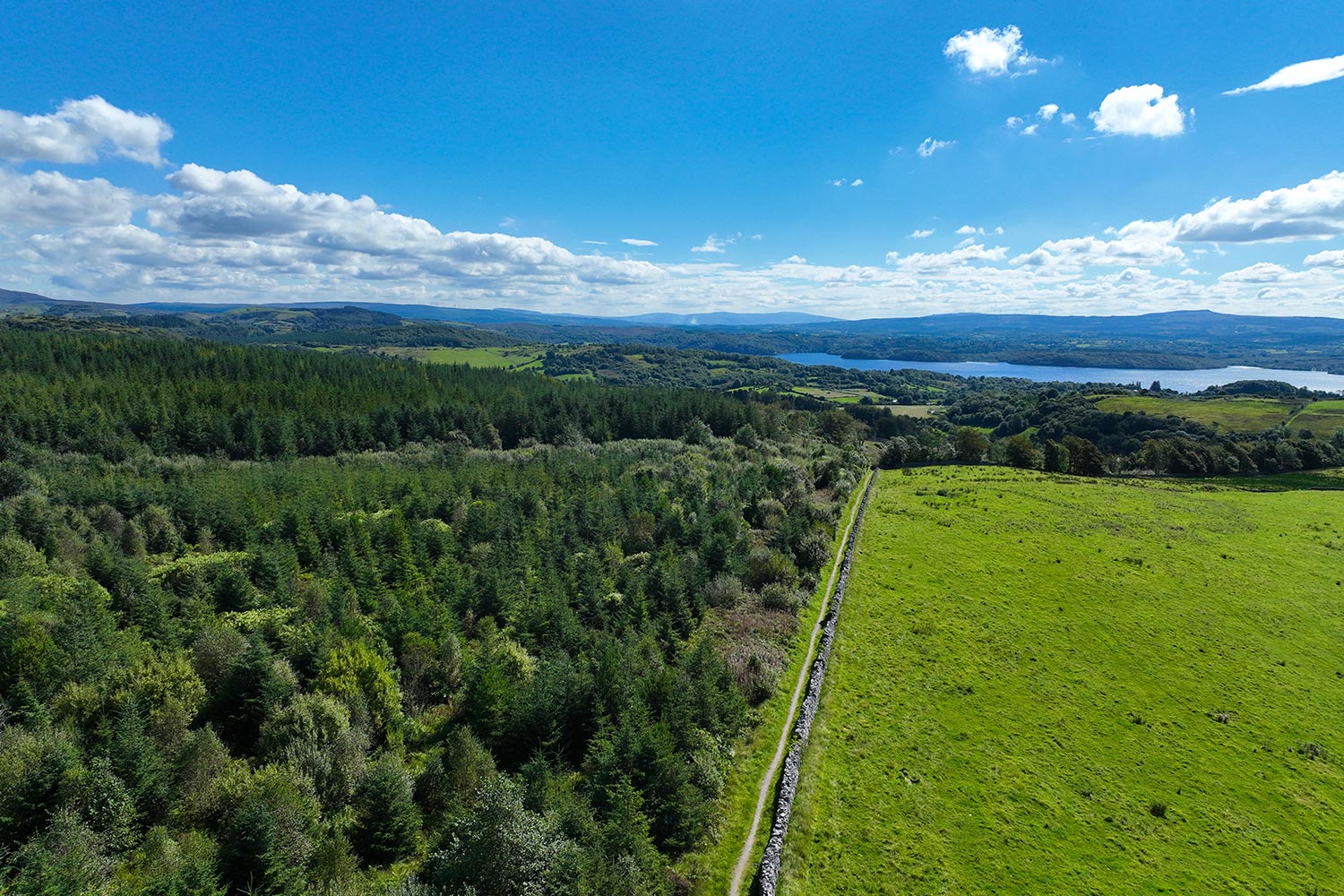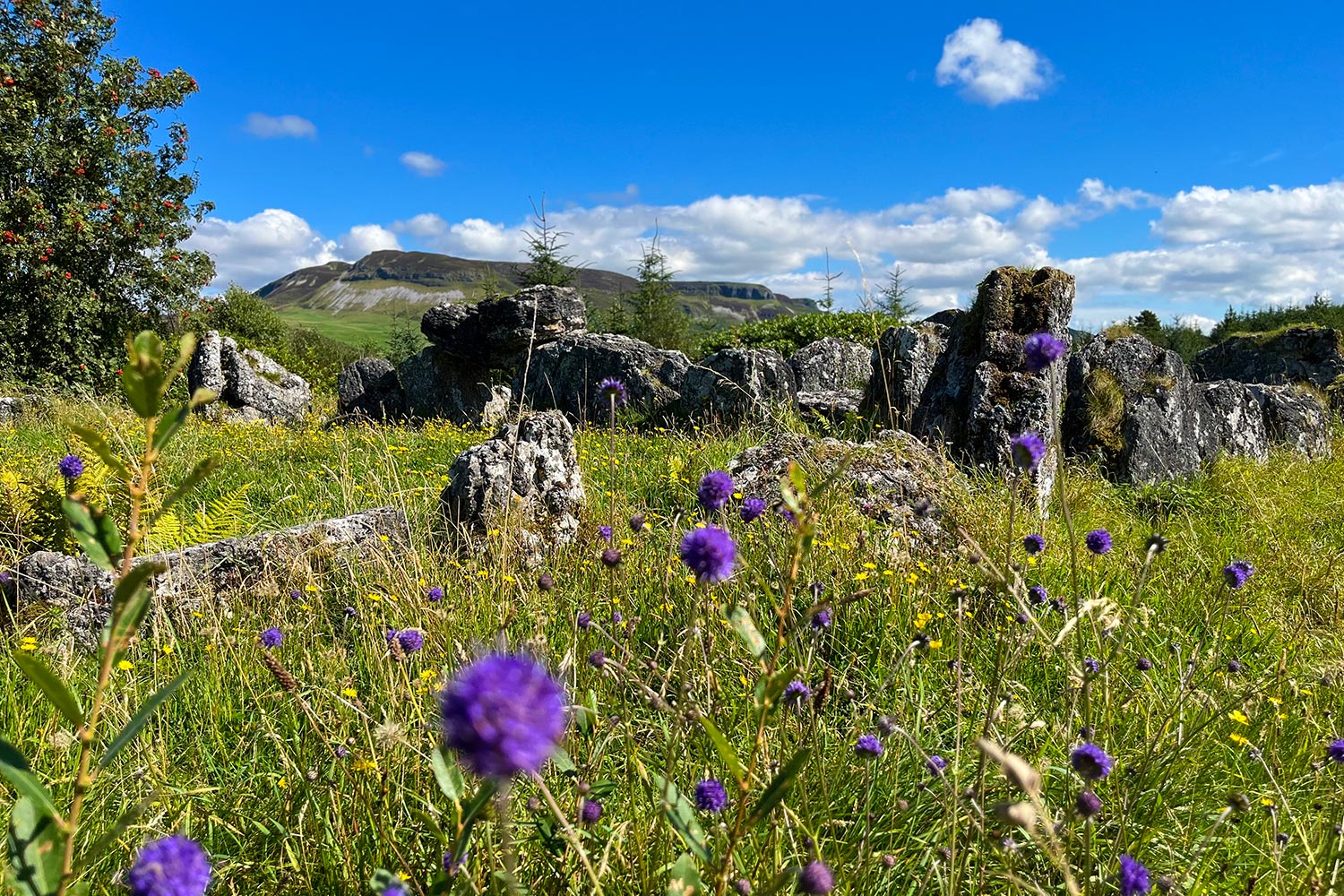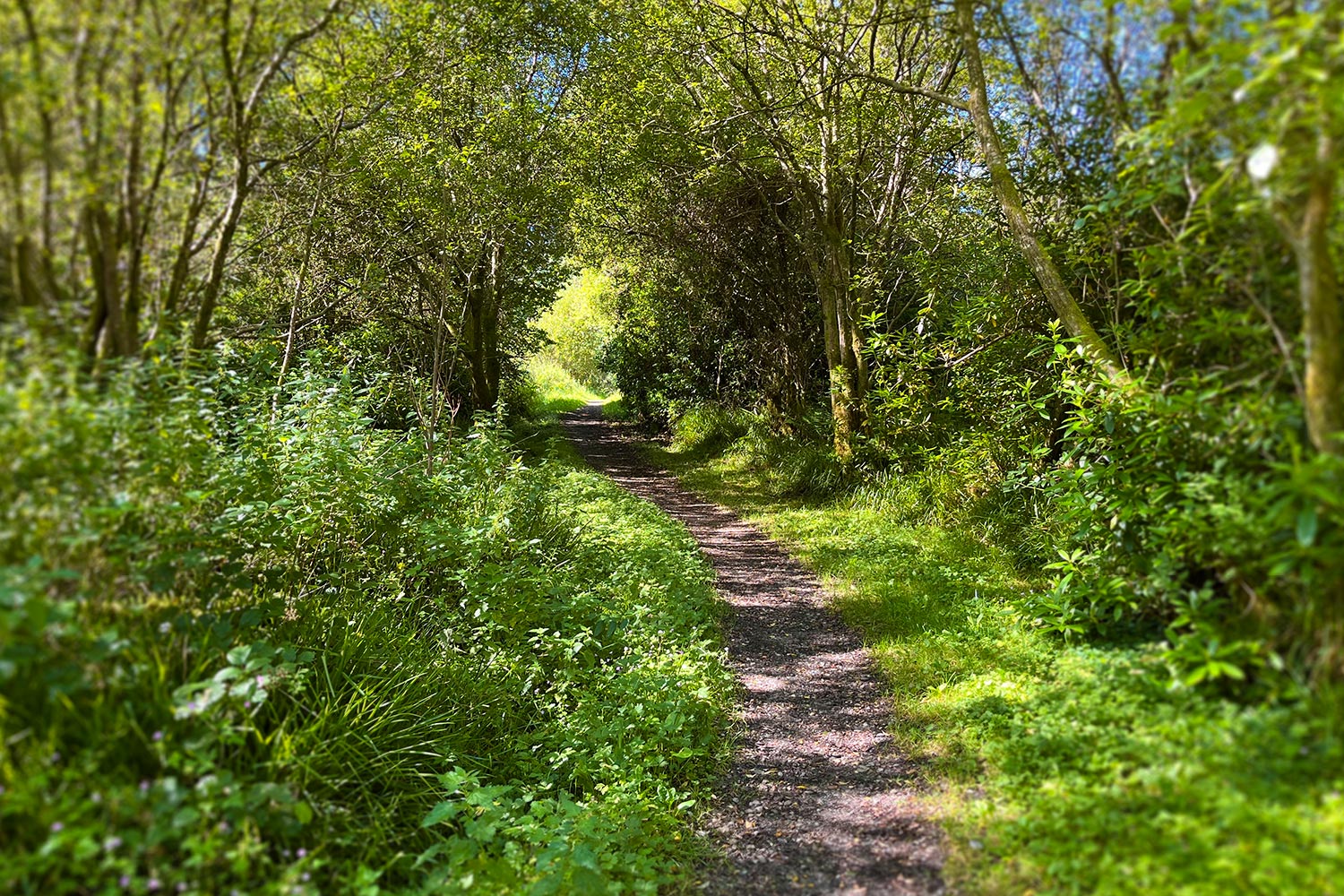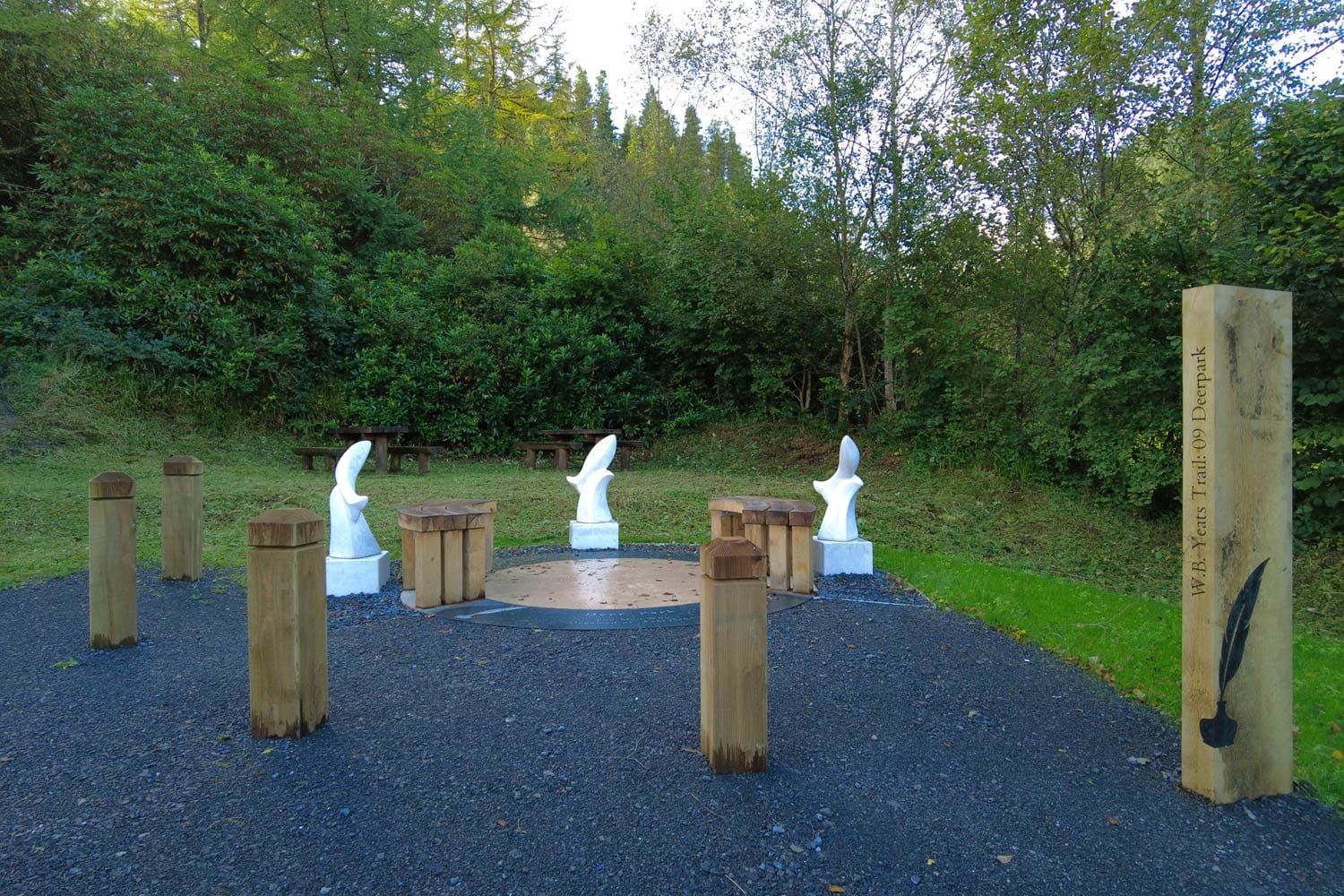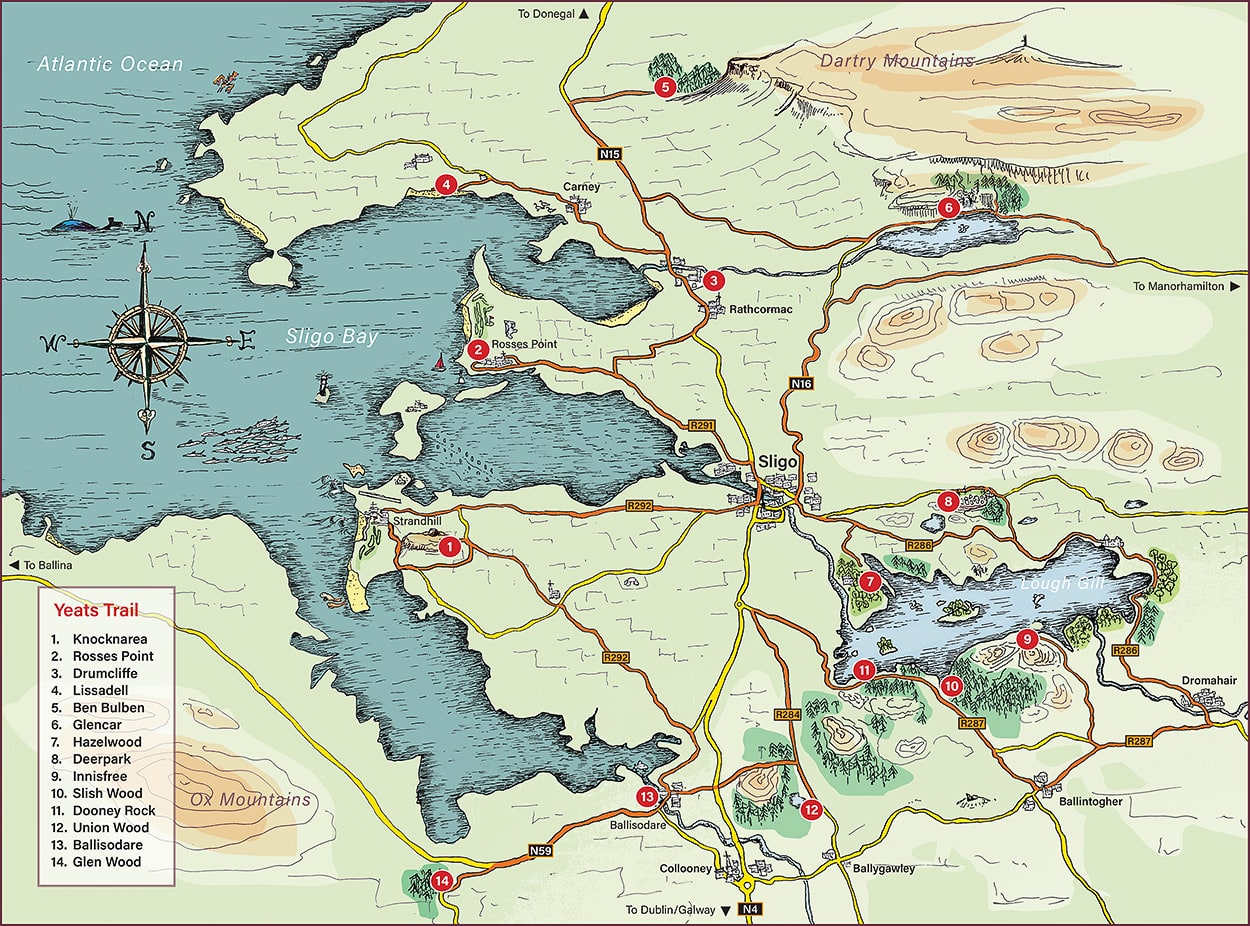The court structure itself is very impressive, comprising some thirty-six large rough fissured limestone slabs. In the early 20th century some of the lintel stones were removed or damaged, and just one now remains in place, with a large crack through the middle. A drawing by William Wakeman in the 1870s shows the monument with three lintel stones in place and we imagine that had Yeats visited here, it would have been Wakeman’s view that he would have seen rather than the one we have today.
This installation was created by local artist Barra Cassidy, whose artwork was inspired by the image of fish in the poem, adding a flourish in his sculpture in the form of a wave. By placing artwork at this location, we aim to pay tribute to the Neolithic farmers who settled in this place several millennia ago and whose ingenuity and resourcefulness enabled them to create Sligo’s ritual landscape.
from The Man Who Dreamed of Faeryland (1891)
He slept under the hill of Lugnagall;
And might have known at last unhaunted sleep
Under that cold and vapour-turbaned steep,
Now that the earth had taken man and all:
Did not the worms that spired about his bones
Proclaim with that unwearied, reedy cry
That God has laid His fingers on the sky,
That from those fingers glittering summer runs
Upon the dancer by the dreamless wave.
Why should those lovers that no lovers miss
Dream, until God burn Nature with a kiss?
The man has found no comfort in the grave.
Directions
Parking: Car park
Walking Trail: https://sligowalks.ie/walks/deer-park/
Longitude: 54.284368 Latitude: -8.372268
View location on Google Map

